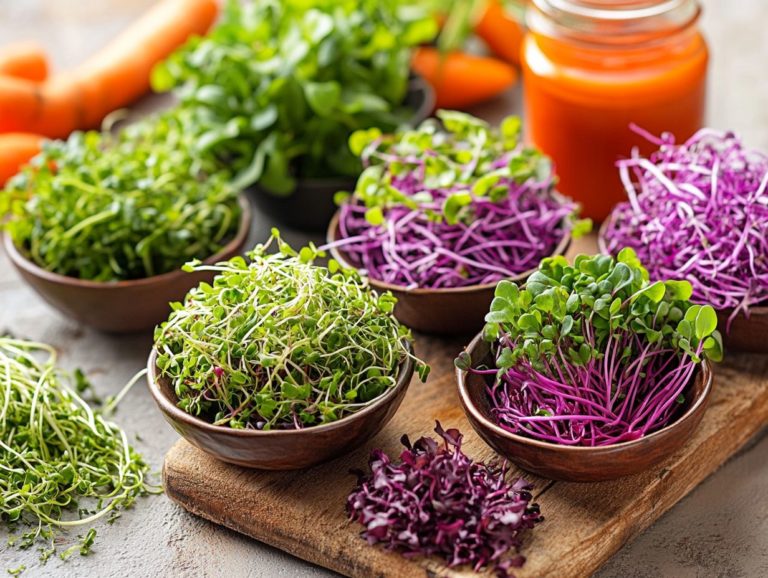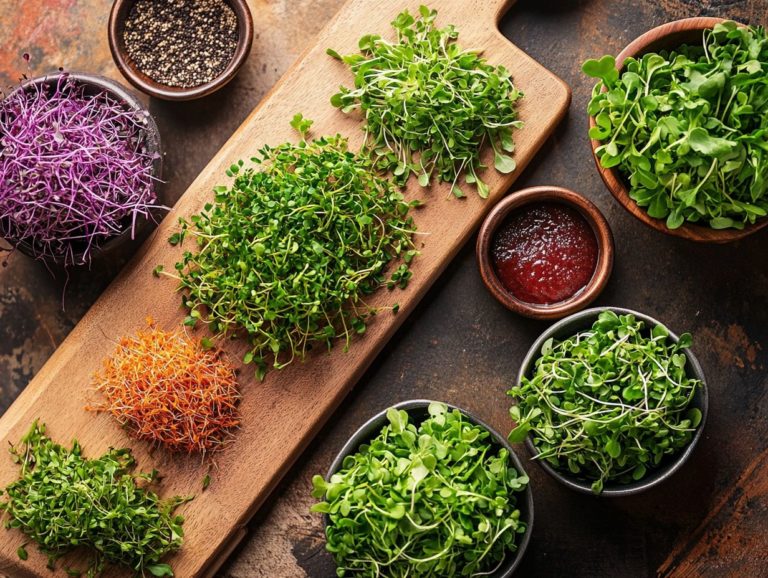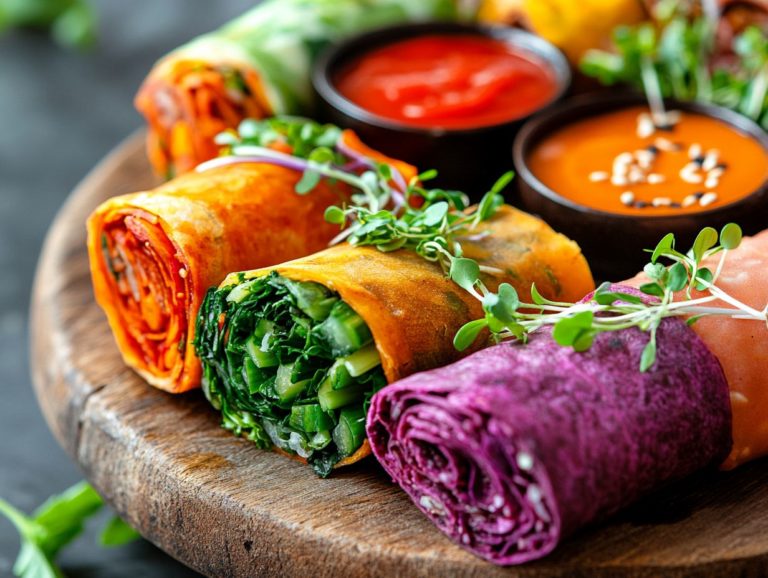60. How to Incorporate Microgreens into Casseroles
Microgreens are tiny, nutrient-rich plants that can elevate your dishes with flavor and health benefits. They add color and nutrition to your casseroles, making them the ideal choice!
Discover the impressive nutritional value of microgreens, explore the best varieties, and learn practical tips for incorporating them into your favorite casserole recipes. We will cover important safety tips too.
Contents
- Key Takeaways:
- What are Microgreens?
- Benefits of Adding Microgreens to Casseroles
- Types of Microgreens to Use
- Preparing Microgreens for Casseroles
- Incorporating Microgreens into Casserole Recipes
- Health and Safety Considerations
- Frequently Asked Questions
- 1. Can I use any type of microgreens in casseroles?
- 2. How should I prepare microgreens before adding them to casseroles?
- 3. Can I add microgreens to casseroles before cooking?
- 4. What is the best way to incorporate microgreens into casseroles?
- 5. Are there any health benefits to including microgreens in casseroles?
- 6. Can I substitute microgreens for other ingredients in casseroles?
Key Takeaways:
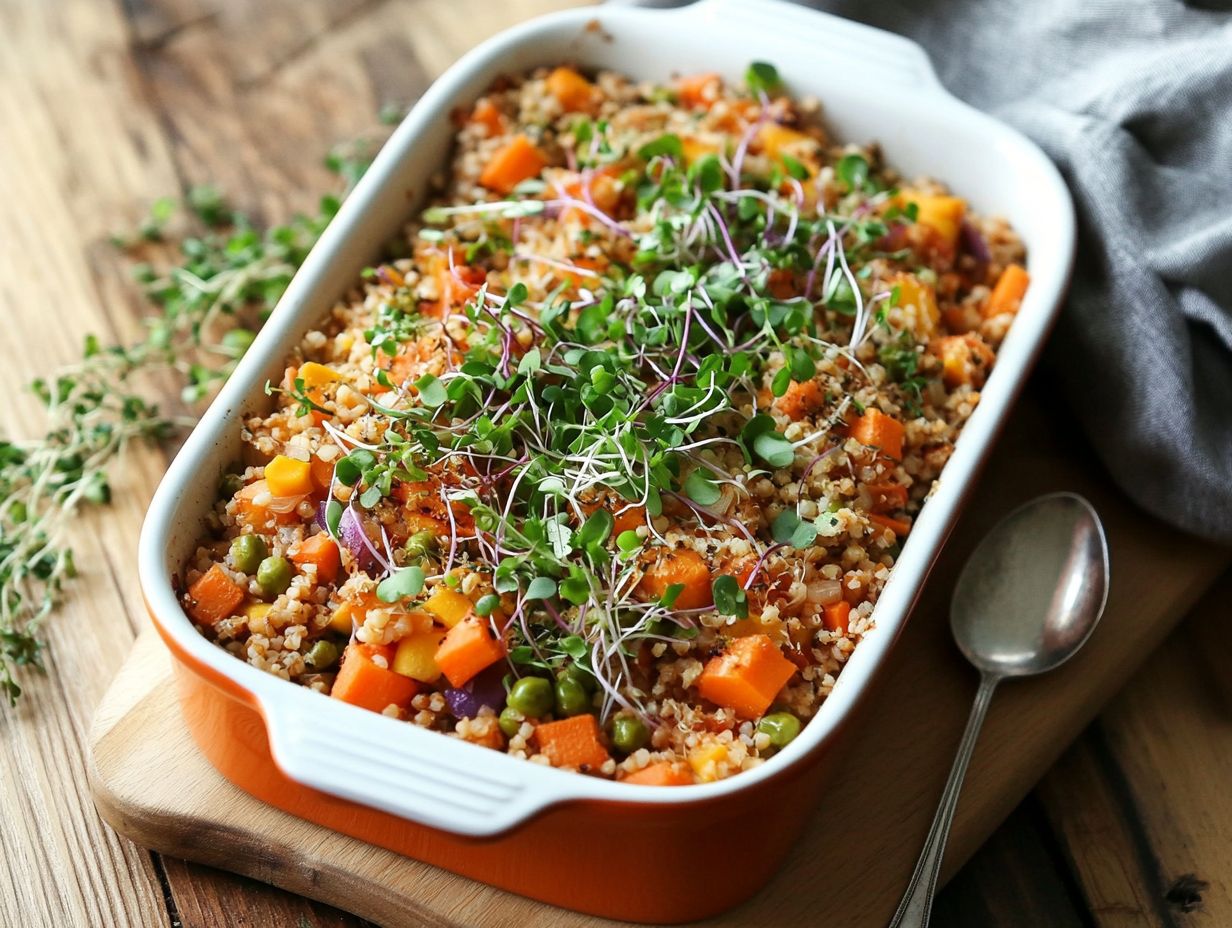
- Boost the nutrition and flavor of your casseroles by adding microgreens, which are packed with essential nutrients.
- Choose the best varieties, like pea shoots and sunflower sprouts, for optimal taste and texture.
- Ensure safety and freshness by washing and chopping microgreens before adding them to your casserole recipes.
What are Microgreens?
Microgreens are nutrient-rich plants harvested just days after germination typically within 7 to 21 days. These tiny greens add vibrant flavors and colors to your dishes, making them a staple in modern cooking.
They enhance the nutritional value of meals and serve as delightful additions to salads, sandwiches, and even desserts. Packed with vitamins and antioxidants, these greens are becoming popular in culinary discussions, featured on podcasts and cooking shows.
Experts, including those from Pennsylvania State University, encourage you to use these greens in your cooking for a healthier and tastier experience.
Benefits of Adding Microgreens to Casseroles
Adding microgreens to your casseroles boosts both flavor and nutrition, transforming a simple dish into something exceptional. These greens are rich in vitamins, minerals, and antioxidants, making them a powerhouse addition to your meals.
You can toss them into a salad as a side or feature them prominently in your casserole; their diverse flavors pair beautifully with many ingredients. To enhance your meals further, learn How to Incorporate Microgreens into Your Diet. Microgreens are essential allies in your culinary journey, especially when you’re aiming for healthier choices.
Nutritional Value and Flavor
Microgreens are often more nutritious than their mature counterparts, offering higher concentrations of vitamins and minerals. They provide a variety of flavors, from the peppery zest of mustard greens to the sweet taste of pea shoots.
Cooking with microgreens allows you to create innovative recipes that elevate your meals. Incorporating them into your diet means enjoying both their health benefits and distinct flavors.
For example, arugula microgreens add a zesty kick to salads and pizza. Sunflower shoots introduce a delightful crunch to sandwiches and wraps. Chefs love to use radish microgreens to garnish soups, enhancing both appearance and flavor. You might even blend these greens into smoothies for a refreshing boost.
Their small size complements nearly any dish, whether sprinkled on risotto or blended into sauces. The versatility of microgreens can transform everyday meals into gourmet experiences, inviting you to experiment with their stunning array of colors and tastes.
Types of Microgreens to Use
When selecting microgreens, you have many options. Each one adds unique flavors and benefits to your dishes. Consider the peppery kick of arugula or the sweet notes of basil; these varieties can transform your casseroles, adding depth and complexity to your culinary creations.
Growing microgreens at home gives you the power to experiment with different types, ensuring that fresh greens are always within reach. Plus, many microgreens can blend seamlessly into your beverages, infusing them with a refreshing twist!
Best Varieties for Casseroles
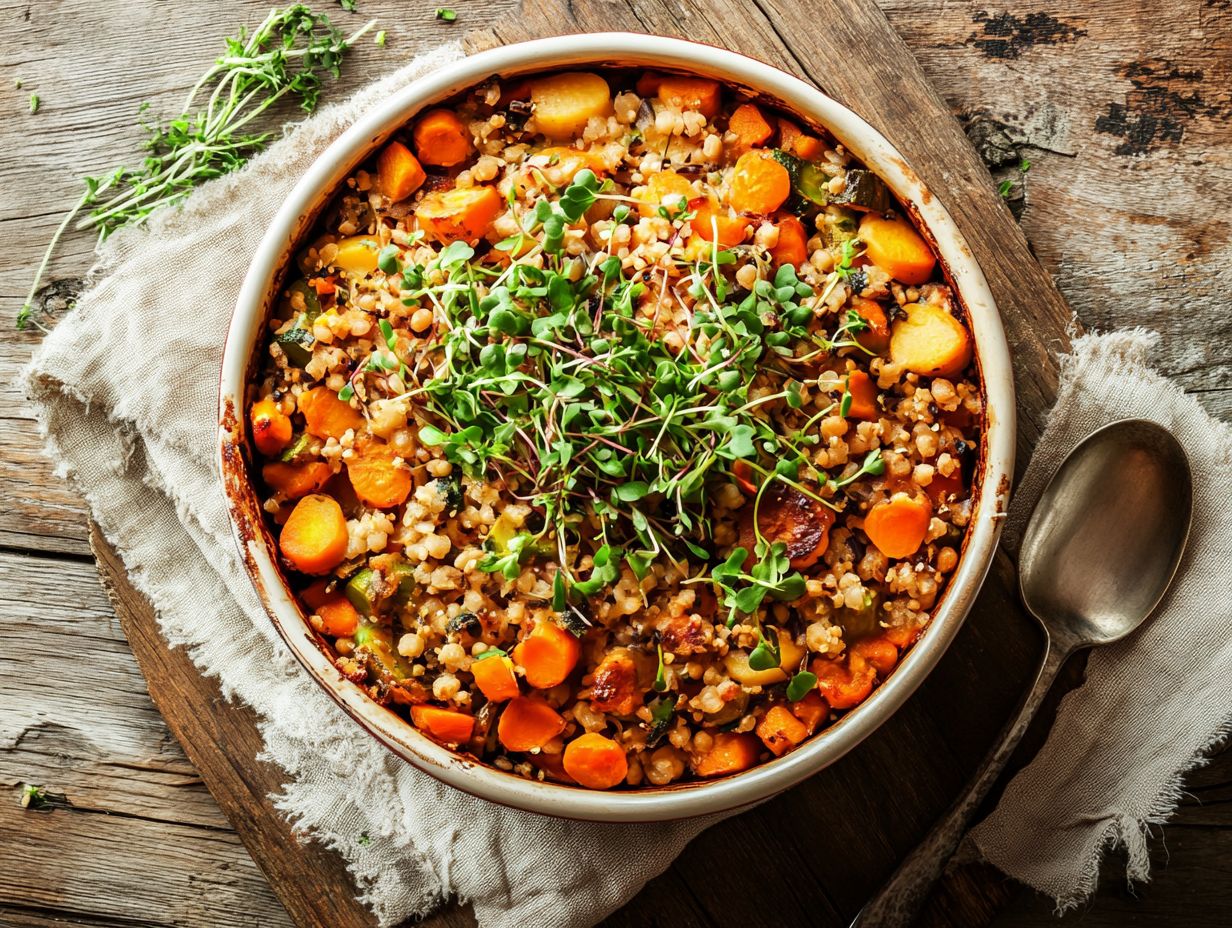
Certain microgreens shine as the best choices for casseroles, delivering both flavor and nutrition to your table. Consider robust options like mustard greens that add a zesty kick and sunflower microgreens, celebrated for their mild, nutty flavor.
Incorporating microgreens into your casseroles boosts visual appeal and introduces a delightful array of textures and nutrients.
When crafting your microgreens recipes, think about which varieties will best enhance the other ingredients in your casserole. For example, pairing basil microgreens with classic lasagna can remarkably elevate the flavors, while arugula microgreens add a peppery flair to creamy potato dishes.
To maximize flavor, layer these microgreens throughout the casserole rather than relegating them to garnishes; this method allows their essence to infuse the dish beautifully.
Adding them to a hearty vegetable medley or a quinoa bake can significantly enhance nutrition. Try adding microgreens to tacos and burritos for a fresh twist!
Keep in mind that balance is key; choose microgreens that enhance without overpowering the core flavors of your casserole. For more insights, check out our guide on cooking with microgreen varieties for tips and tricks.
Preparing Microgreens for Casseroles
Proper preparation of microgreens is essential for maximizing their flavor and health benefits when added to casseroles. This involves meticulous washing and chopping techniques to ensure they are clean and primed for cooking. Unlike sturdier greens, microgreens require gentle handling due to their delicate nature.
Incorporating them into a microgreens salad is an excellent way to use any leftovers. Their vibrant flavors can also elevate your microgreens snacks. Mastering the art of preparing microgreens is crucial for enhancing any dish you create.
Washing and Chopping Techniques
Washing and chopping techniques are essential for preserving the integrity and flavor of microgreens. Begin by rinsing your microgreens gently under cold water to remove any dirt or debris; handle them carefully to avoid bruising. After they re clean, grab a sharp knife and chop them finely or keep them whole, depending on your recipe.
These freshly prepared microgreens can elevate everything from salads to breakfast dishes, showcasing their remarkable versatility in the kitchen.
Proper washing and chopping not only protect the delicate flavors microgreens offer, but they also enhance the visual appeal on your plate. Finely chopped microgreens can make an exquisite garnish, adding both color and texture that elevate your meal s presentation.
Consider adding microgreens to:
- Sandwiches for delightful crunch, or try microgreens for breakfast in a morning omelet!
- Soups for an extra nutrient boost.
- Pizzas just before serving to retain their freshness.
These tiny greens bring a burst of freshness to virtually any dish, making them a critical element in both everyday meals and gourmet creations!
Don’t miss out on the incredible flavors and benefits microgreens can bring to your meals! Try adding microgreens to your next casserole for an instant flavor boost!
Incorporating Microgreens into Casserole Recipes
Incorporating microgreens into your casserole recipes unveils a realm of culinary possibilities. They elevate both flavor and nutritional value. You have a myriad of ideas and tips at your disposal for seamlessly integrating microgreens into your favorite dishes.
For example, consider layering microgreens between the other ingredients or using them as a base for a vibrant pesto. These techniques can introduce delightful new flavor profiles.
Microgreens add color to your casseroles and invite you to experiment with new flavors and textures. Each dish can become uniquely yours.
Ideas and Tips for Adding Microgreens
When you re looking to elevate your meals with microgreens, the possibilities are truly endless. Imagine mixing them into your casserole filling for that unexpected zing or using them as a vibrant garnish to impress your guests.
They re perfect for microgreens snacks or smoothies, making them a versatile addition to nearly any dish. With the right microgreens recipes, you ll explore new recipe ideas while enjoying their impressive health benefits.
Consider pairing these nutrient-dense greens with eggs in an omelet or frittata. This not only enhances the dish visually but also boosts its vitamin content.
You can sprinkle them atop soups and salads, adding a delightful crunch and freshness that contrasts beautifully with creamy or warm components.
Incorporating microgreens into dressings or sauces can elevate flavor profiles while infusing essential nutrients. These nutrients help protect your cells from damage, making your meals even healthier.
Whether you choose mustard greens for a spicy kick or pea shoots for a hint of sweetness, these tiny greens pack a punch, inviting you to explore delicious and healthy flavors!
Health and Safety Considerations
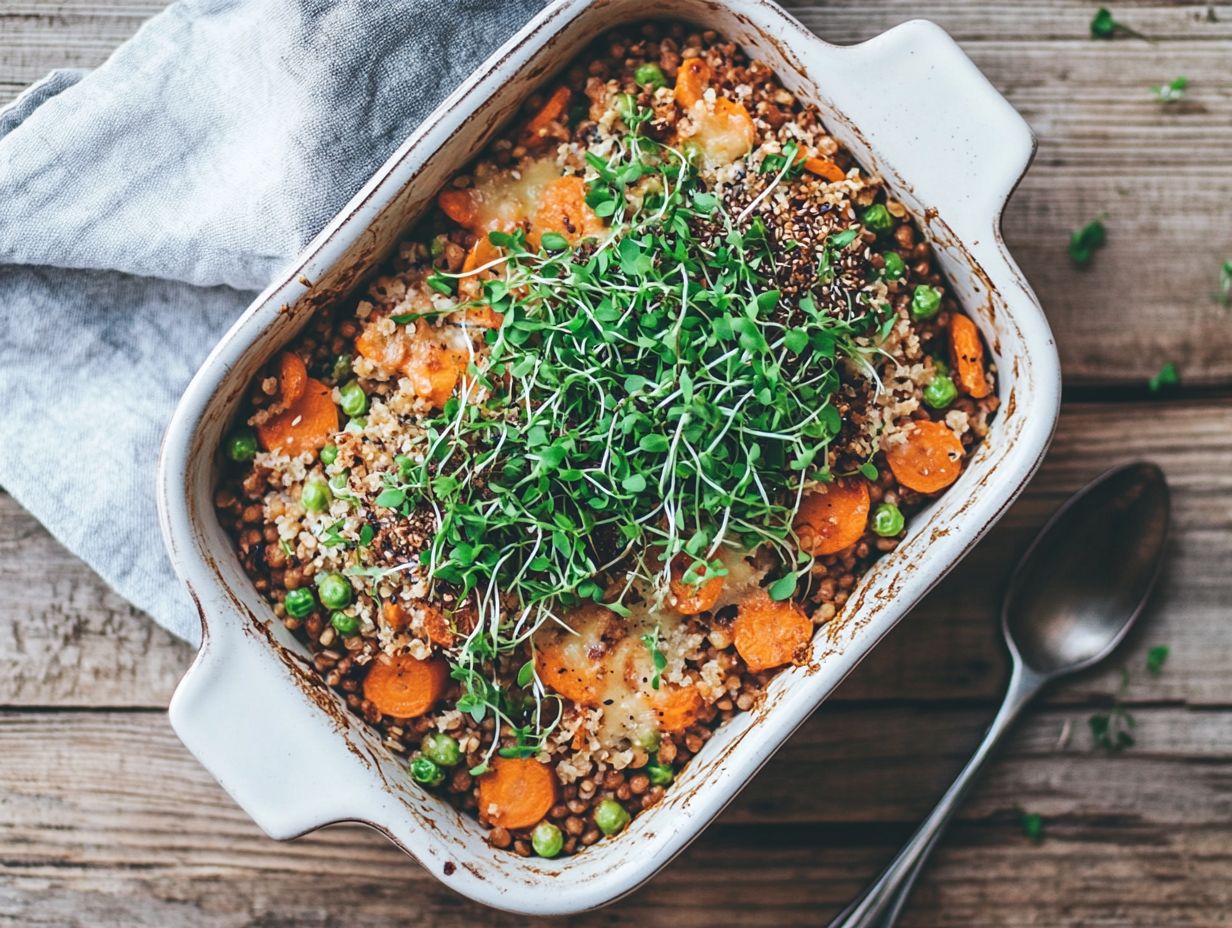
While microgreens are incredibly nutritious and bursting with flavor, it s vital to consider health and safety aspects when adding them to your dishes. Grasping the health benefits of microgreens is important, but taking precautions especially when using raw microgreens in salads or as garnishes is equally essential.
Properly washing them and sourcing from reputable growers can significantly reduce risks. This allows you to savor these tiny greens with confidence.
Precautions for Using Raw Microgreens
Taking precautions with raw microgreens is essential for maximizing their health benefits while minimizing potential risks. Always wash your microgreens thoroughly under running water to eliminate contaminants.
Whenever possible, choose organic varieties to reduce exposure to pesticides. Sourcing your microgreens from reputable suppliers or growing them yourself can further enhance their safety.
With these measures, you can confidently enjoy microgreens in your dishes, relishing their vibrant flavors and nutrients without any worry. It’s also wise to inspect your microgreens for any signs of spoilage, such as discoloration or unusual smells, before indulging.
Consider giving them a vinegar-based wash for an extra layer of cleanliness, as this can help eradicate harmful bacteria. If you re immunocompromised or pregnant, it s advisable to cook microgreens instead of enjoying them raw.
Keeping your microgreens refrigerated can extend their freshness. Aim to consume them within a week to maintain optimal flavor and nutritional value. By following these actionable steps, you can safely and healthfully elevate your meals with the delightful addition of microgreens.
Final Thoughts and Recommendations
Microgreens are a culinary treasure. They can elevate your cooking while providing numerous health benefits.
These tiny powerhouses are rich in nutrients. They offer antioxidants and essential vitamins, making them an excellent choice for enhancing your diet.
Explore different varieties like arugula, basil, or radish. Discover new flavors that will enhance your favorite dishes.
Listen to engaging podcasts to deepen your understanding. Experimenting with various recipes will spark creativity in the kitchen.
Embracing microgreens enriches your meals. It promotes a mindful approach to healthy eating, encouraging exploration in your culinary journey.
Frequently Asked Questions
1. Can I use any type of microgreens in casseroles?
Yes! Use any type of microgreens in casseroles. Popular choices include broccoli, radish, and sunflower microgreens.
2. How should I prepare microgreens before adding them to casseroles?

Wash and dry the microgreens thoroughly. Chopping them into smaller pieces helps with easier incorporation into the dish.
3. Can I add microgreens to casseroles before cooking?
Absolutely! Just check the cooking time for the microgreens and adjust the casserole’s cooking time accordingly.
4. What is the best way to incorporate microgreens into casseroles?
Mix microgreens with other ingredients before baking. Sprinkling them on top after cooking adds a fresh and colorful touch.
5. Are there any health benefits to including microgreens in casseroles?
Yes, they are nutrient-dense! Microgreens boost vitamins and minerals in your dish and add delicious flavor.
6. Can I substitute microgreens for other ingredients in casseroles?
You can substitute them for some herbs or greens, but they won t provide the same texture or flavor. It’s best to use microgreens as an addition rather than a complete substitute.


